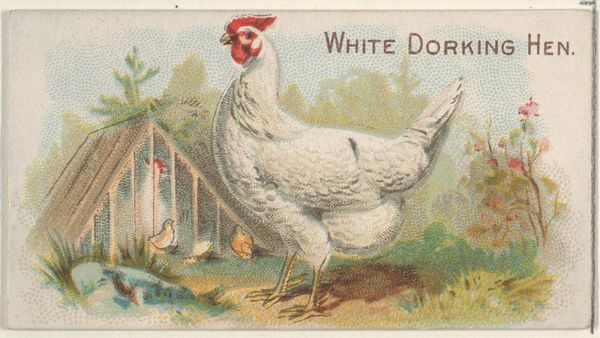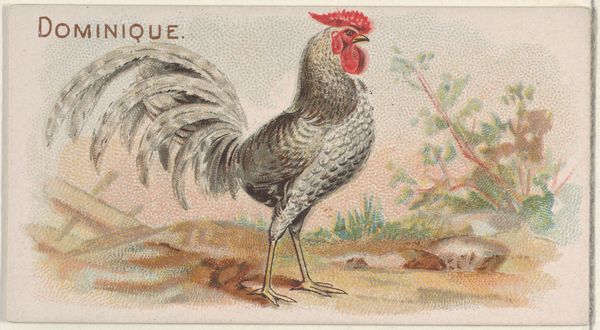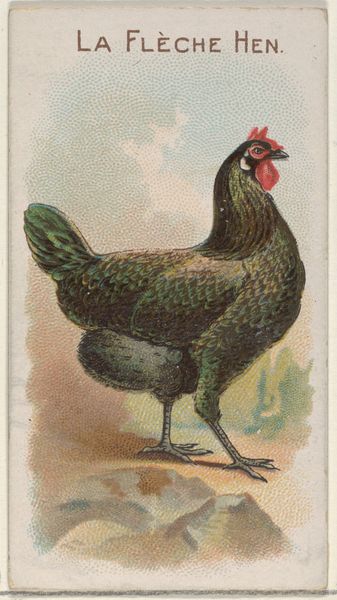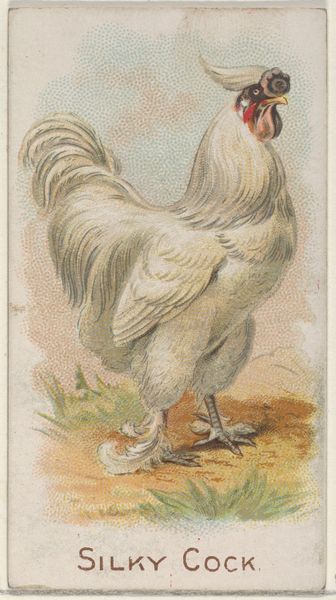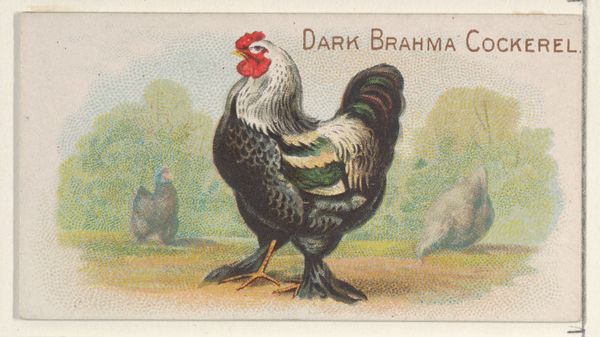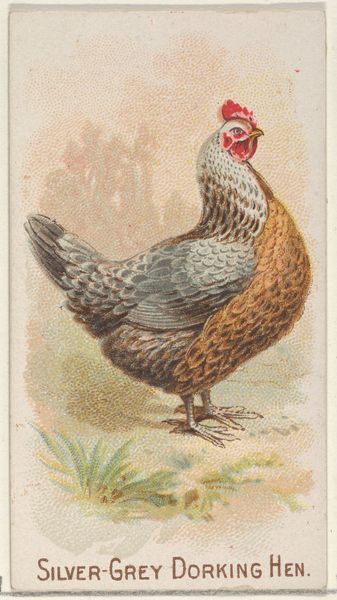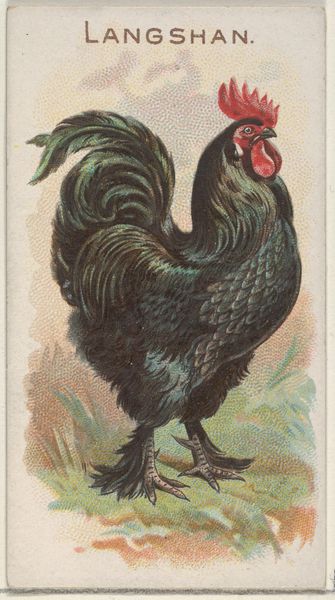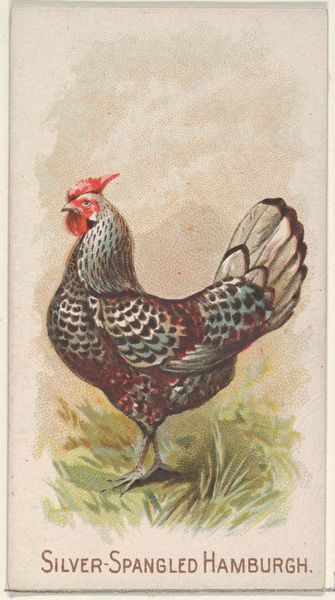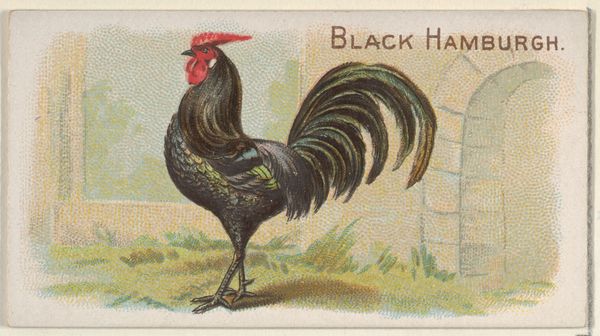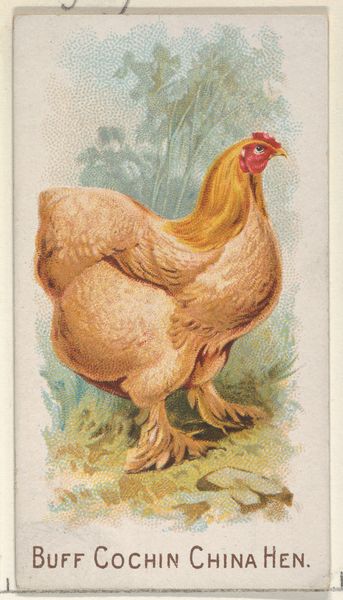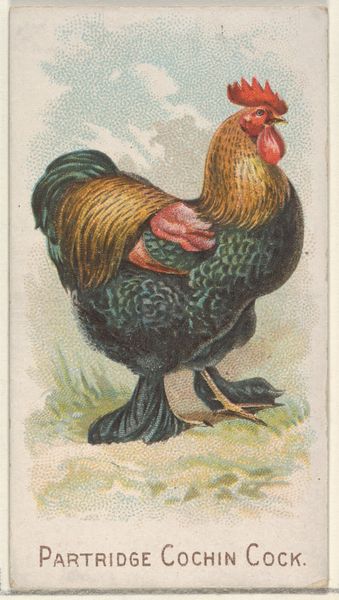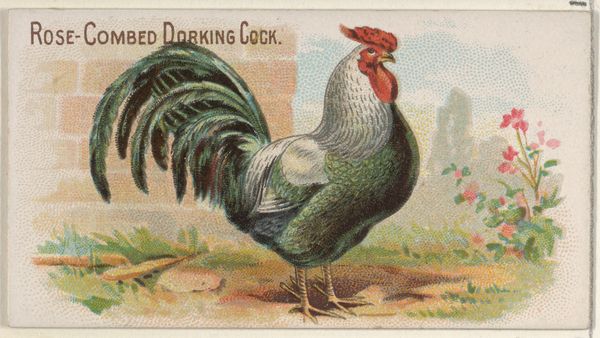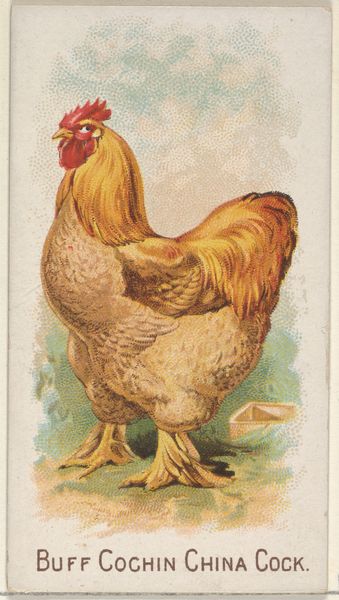
White Plymouth Rock, from the Prize and Game Chickens series (N20) for Allen & Ginter Cigarettes 1891
0:00
0:00
Dimensions: Sheet: 1 1/2 x 2 3/4 in. (3.8 x 7 cm)
Copyright: Public Domain
Curator: This is "White Plymouth Rock" from the "Prize and Game Chickens" series, a colored-pencil print created in 1891 for Allen & Ginter Cigarettes. Editor: It's a very…stately chicken! It reminds me of the illustrations in children's books, but it's also surprisingly detailed. What do you see in this piece beyond its surface appeal? Curator: I see a fascinating intersection of consumer culture and the burgeoning scientific interest in selective breeding and animal husbandry of the late 19th century. These cards, inserted in cigarette packs, were essentially advertisements, but they also served as visual guides, categorizing and valorizing specific breeds. Editor: So, it's about more than just selling cigarettes? Curator: Exactly. Think about what's being sold here. The White Plymouth Rock was prized for its meat and egg production. This card implicitly promotes the capitalist values of efficiency and productivity even in the natural world. There's a subtle reinforcement of social hierarchies too— prize chickens versus, presumably, ‘lesser’ breeds. What do you think the context of impressionism adds to the meaning? Editor: I see the impressionist style of broken brushstrokes, almost pointillist, is applied here to a chicken as part of popular culture! The barn in the background seems… quaint. How did gender roles and social classes come into play at the time? Curator: It is thought-provoking. These cards appealed to a predominantly male smoking audience, associating them with ideas of expertise, leisure, and the gentleman farmer ideal. This reinforces conventional gender roles, where men are the authorities on such matters. Further research could illuminate links between class structures and views on agricultural advancements. Editor: I never considered how something as simple as a cigarette card could reflect such complex social ideas. Thanks so much for explaining all of this to me! Curator: It highlights how everyday objects can be rich sources for understanding cultural values. Thinking critically about art empowers us to question and challenge power dynamics.
Comments
No comments
Be the first to comment and join the conversation on the ultimate creative platform.

